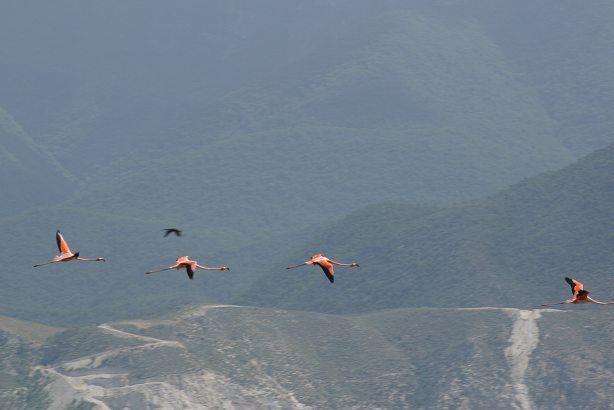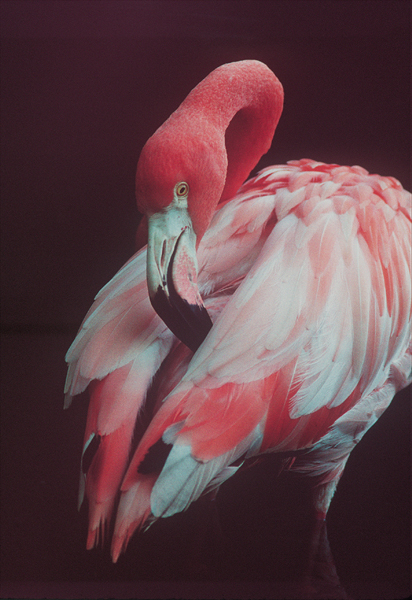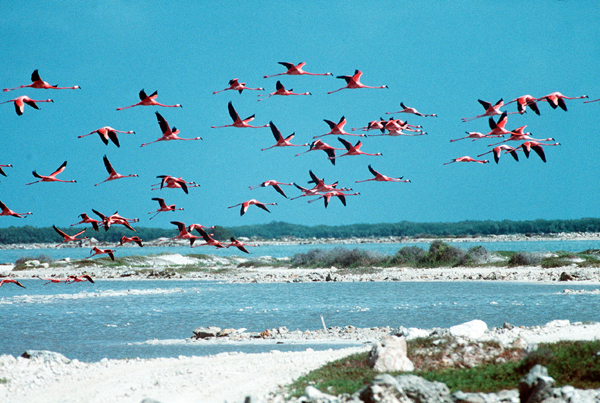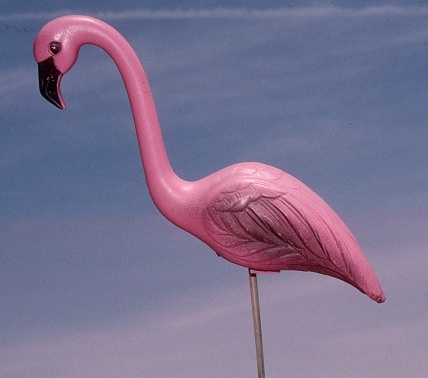| Greater Flamingo
Phoenicopterus ruber Flamenco Mayor
|
 |
|
Photo: B. Hallett*
|
|
IDENTIFICATION: A long-legged, pink bird with a dramatically curved, black-tipped bill. The pink feather color derives from carotenoid pigments found in crustaceans that the bird eats. Captive flamingos kept on a poor diet, lose their pink color. Length: 120-145 cm.; weight: 2,100-4,100 g. (females smaller than males). VOICE: Adults have a nasal honk, like a goose. Young birds make barking and whistling notes. HABITAT: Salt flats, mangroves, and salt ponds. HABITS: The flamingo’s hooked bill is adapted to straining crustaceans out of water. The flamingo also eats worms, molluscs, algae, and insects. It agitates its feet in the mud, presumably to float prey toward the surface, then holds its bill upside down in the water, as it moves the bill from side to side. The tongue and lower bill propel mud through a comb-like grid on the upper bill to strain out food. Sometimes the bird feeds up to its belly in water, and completely submerges the head and neck while feeding. The Flamingo flies with its long legs and neck outstretched. It nests in colonies, sometimes with thousands of pairs of birds. Both sexes build a cone-shaped, mud nest about 1-2 feet high, sometimes located with one nest touching its neighbor. If sticks are located nearby, they may be part of the nest material. The female lays 1-2 eggs per clutch, but usually only one chick survives. Both sexes incubate over a 27-31 day period. Parents regurgitate a black liquid---a drop at a time---to young chicks. Chicks also eat their own eggshell. The young Flamingo has a straight, un-hooked, bill for the first two weeks of life. After a week in the nest, the chicks leave and gather in flocks (creches). Chicks fledge 65-90 days after hatching, but will not breed until 5-6 years of age. STATUS AND CONSERVATION: The Flamingo formerly nested at salt flats in Puerto Rico, but was eliminated by egg collecting, hunting, and disturbance at nesting colonies. Rare individuals still visit from colonies on other islands. The race found in the West Indies and Yucatán (Phoenicopterus ruber ruber) has been reduced to only about 140,000 birds, but the largest nesting colonies are protected. RANGE: Nests in the Caribbean (Bahamas, Cuba, Dominican Republic, Netherlands Antilles), Yucatán, the Galapagos Islands, and in scattered colonies in Africa and South Asia. Wandering individuals from other islands are occasionally reported from the Cabo Rojo salt flats (e.g. 6 individuals on 25 October 1998; 1 bird on 28 February 1999; 7 on eastern Vieques Island, October 2000 - January 2001). Now that the saltflats are protected as part of the Cabo Rojo National Wildlife Refuge, it may be possible to reestablish a breeding population there. TAXONOMY: PHOENICOPTERIFORMES; PHOENICOPTERIDAE. May soon be split from the Old World races and renamed the Caribbean Flamingo (Phoenicopterus ruber). |
|
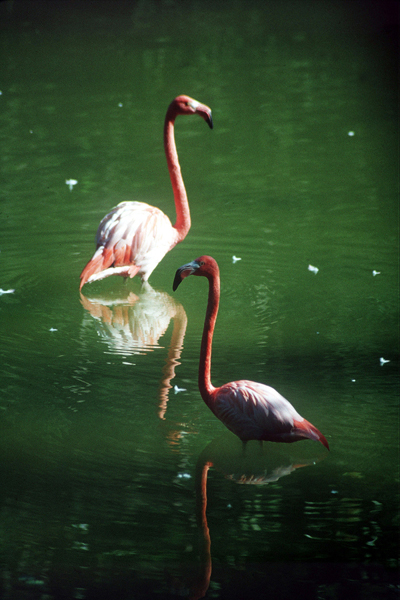 |
|
|
Photo: G. Beaton*
|
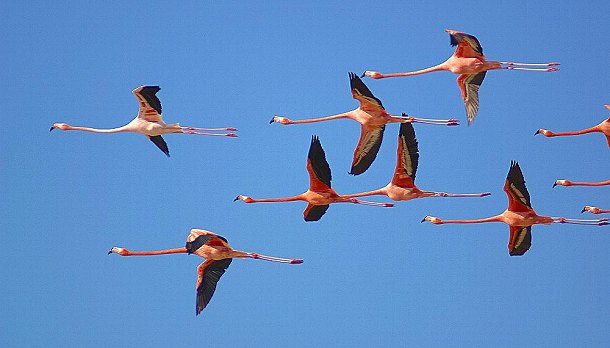 |
|
Photo: A. Sánchez Muñoz
|
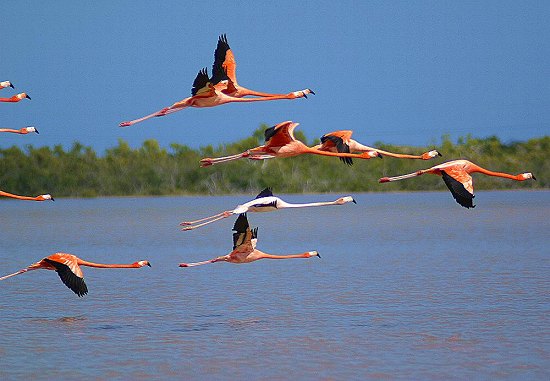 |
|
Photo: A. Sánchez Muñoz
|
